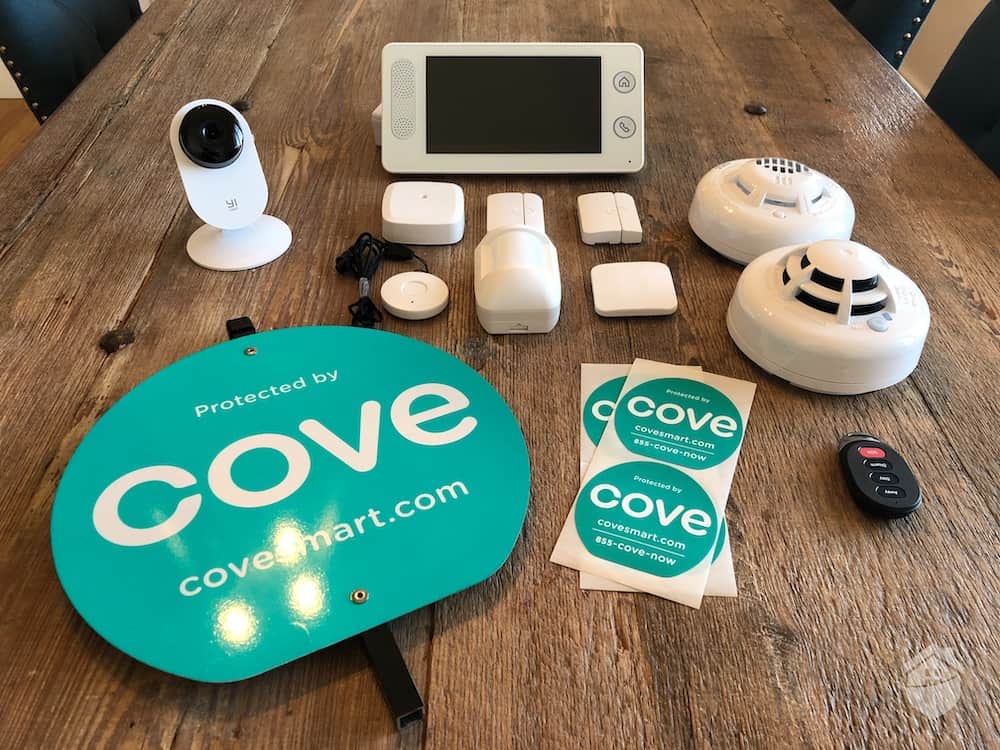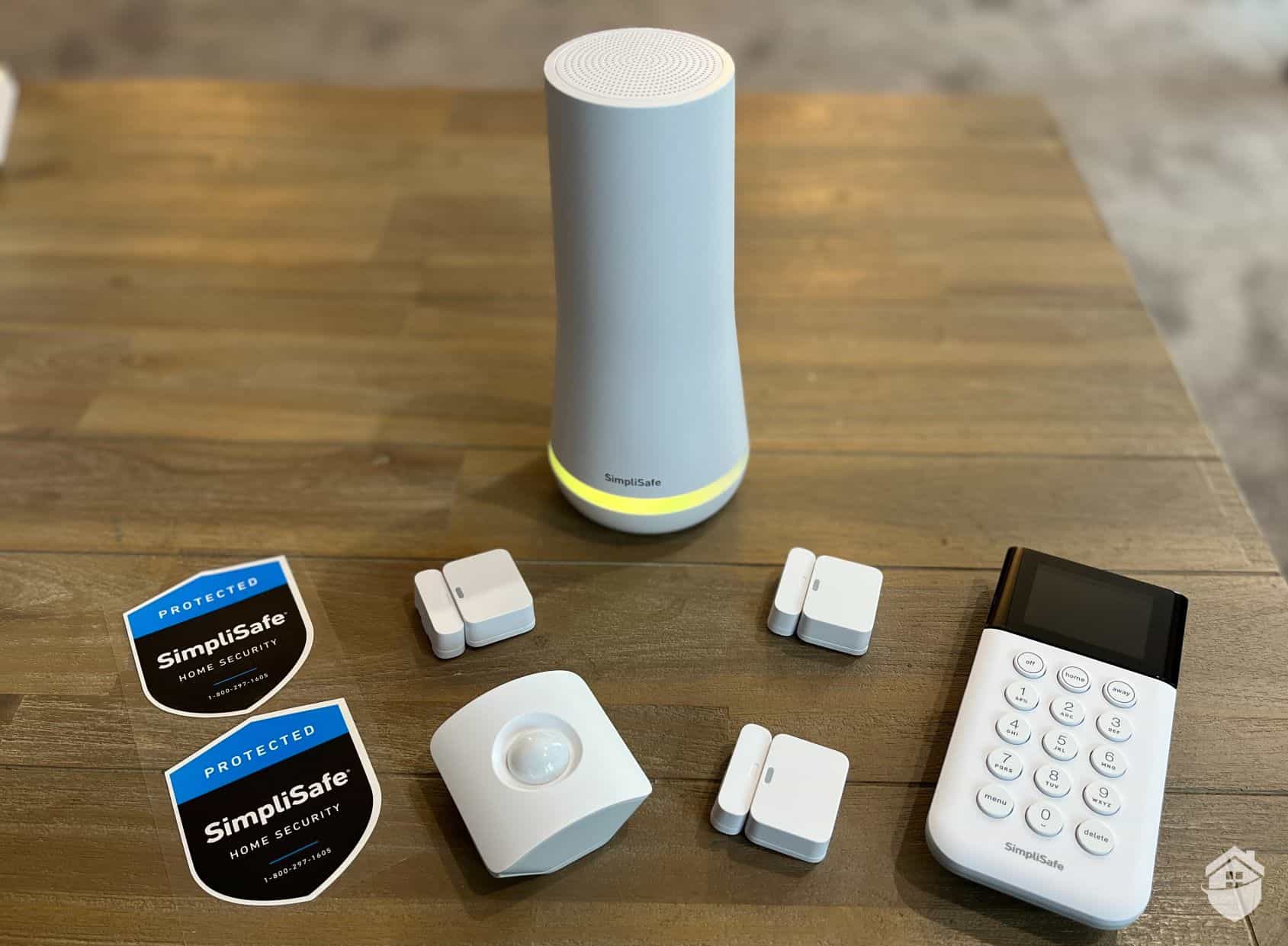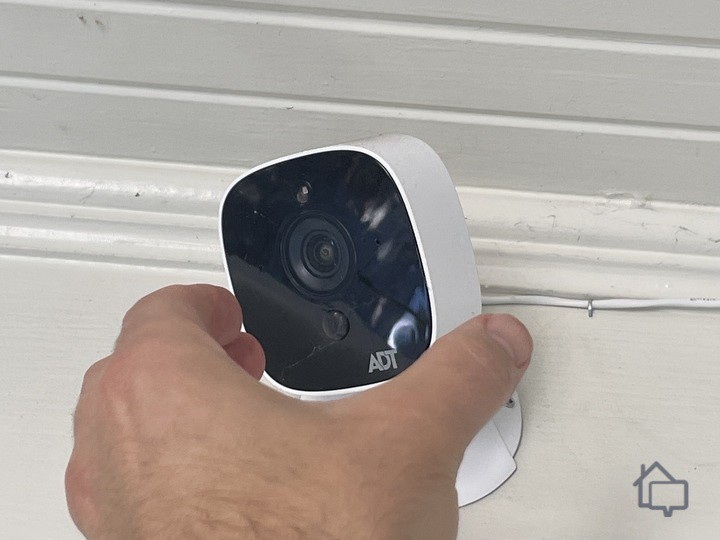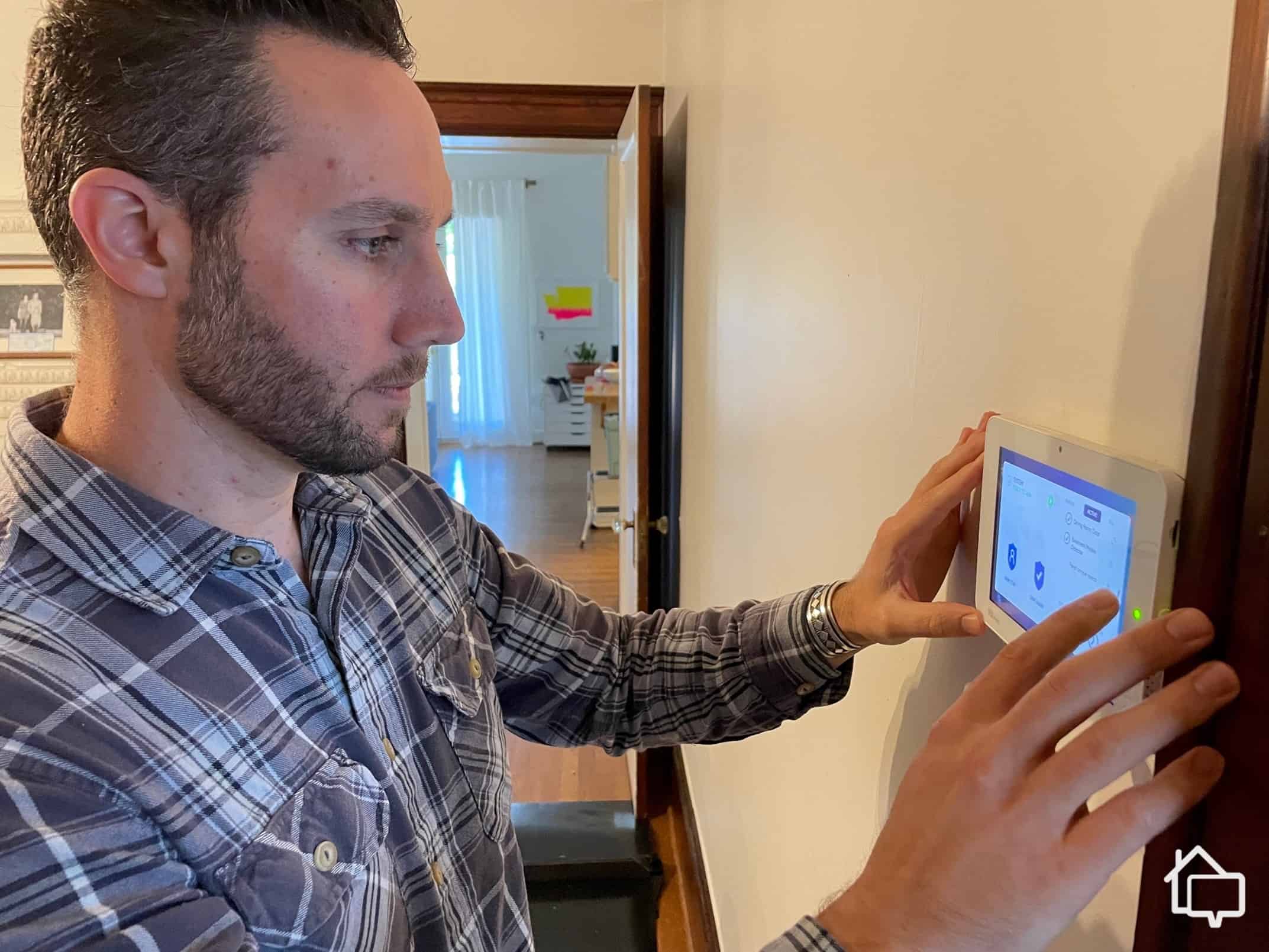Sensors may not be the most exciting components, but they are the front line of any home security system. They are the ones that detect potential intrusions and safety hazards. That’s why, when we review security systems such as Vivint, we always look at which types of sensors are available and whether they have any special features that can improve the security and overall safety of everyone living in your house — including pets.
We’ve had the latest Vivint system installed for over a year now, and we’ve been testing it in-home for just as long. We got well acquainted with its entryway, motion, and glass break sensors, and even their smoke and carbon monoxide alarms. They are not as feature-rich as the Vivint security cameras we reviewed, for sure, but keep reading to find out what sensors from one of the top home security systems of 2025 can do.
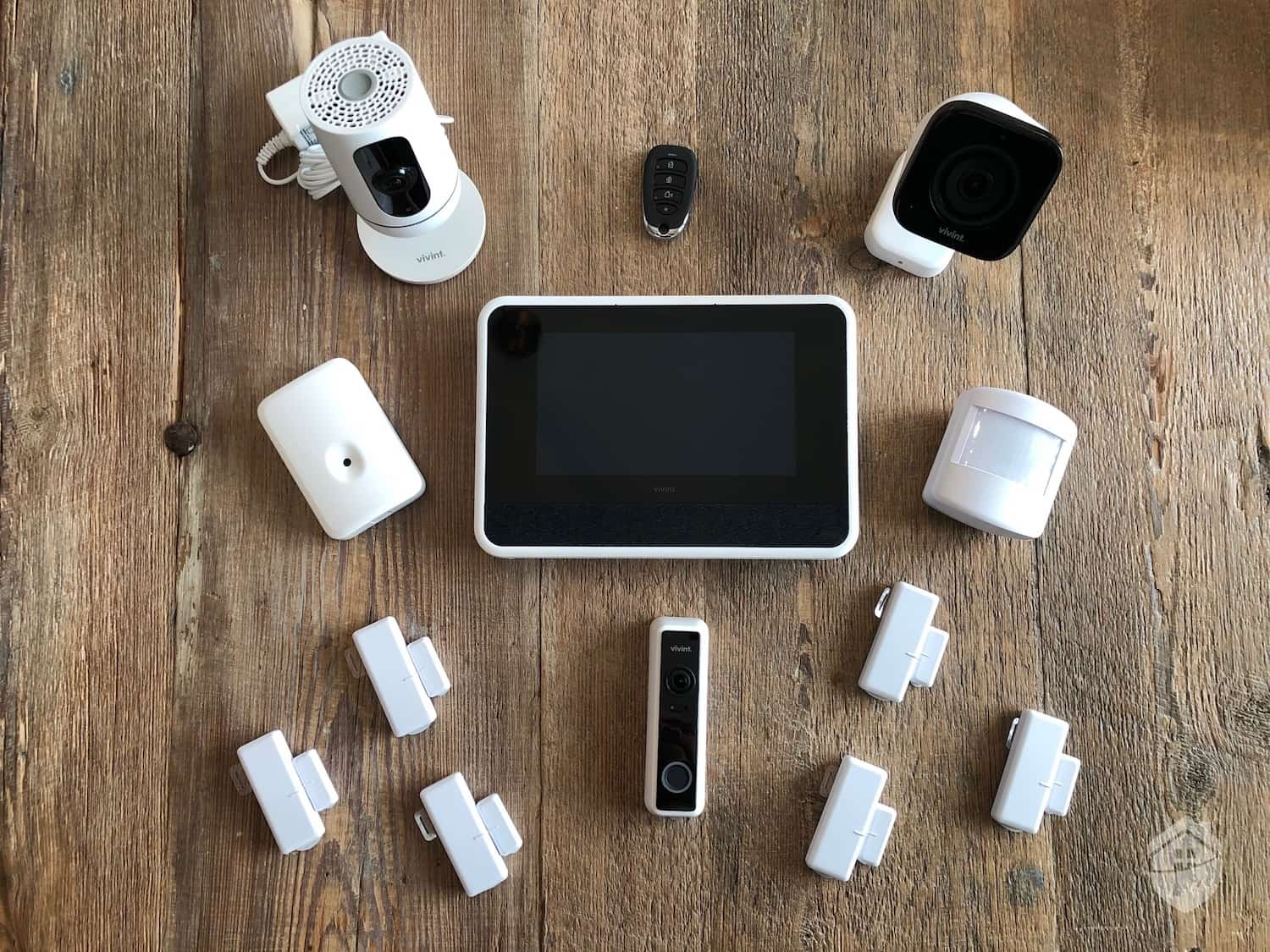
We got this Vivint system installed over a year ago, and we’ve been adding more sensors to test from time to time.
Our Full Experience with Vivint Sensors
Vivint is one of the best home automation security systems on the market today, so they definitely install more than just sensors. They also have smart thermostats, smart locks, and, of course, their highly touted (but quite expensive) security cameras. Still, Vivint primarily relies on sensors for home protection. It offers door and window sensors, motion sensors, glass break sensors, and environmental sensors such as smoke alarms. We’ve had these sensors installed all over the house, and here’s what we can tell you about them.
Door/Window Sensors
Vivint offers two types of door and window sensors: the peel-and-stick variety and recessed door sensors. Recessed door sensors are rarer — the abode system we reviewed recently is the only other security system we’ve tested that offered it to us outright. But first, let’s talk about the peel-and-stick variety.
These are your run-of-the-mill magnetic sensors that home security systems have been offering for literally decades. They get the job done, but they’ll be highly visible — especially on your doors. They are easy to spot, and they won’t be scoring your home additional decor points. That said, some companies have started offering more stylish door and window sensors, including ADT, one of Vivint’s starkest competition. Their new door sensors are slimmer and more rounded, so they might be a better option if you care about your home’s aesthetics.
>> Compare: ADT vs. Vivint
FYI: We remember when we reviewed an ADT system a few years ago — back when they still had their clunkier, more boxy door sensors — the technician that installed the system even painted the door sensor to match our wooden door’s color. It didn’t make the sensor any prettier, but at least it blended in better.
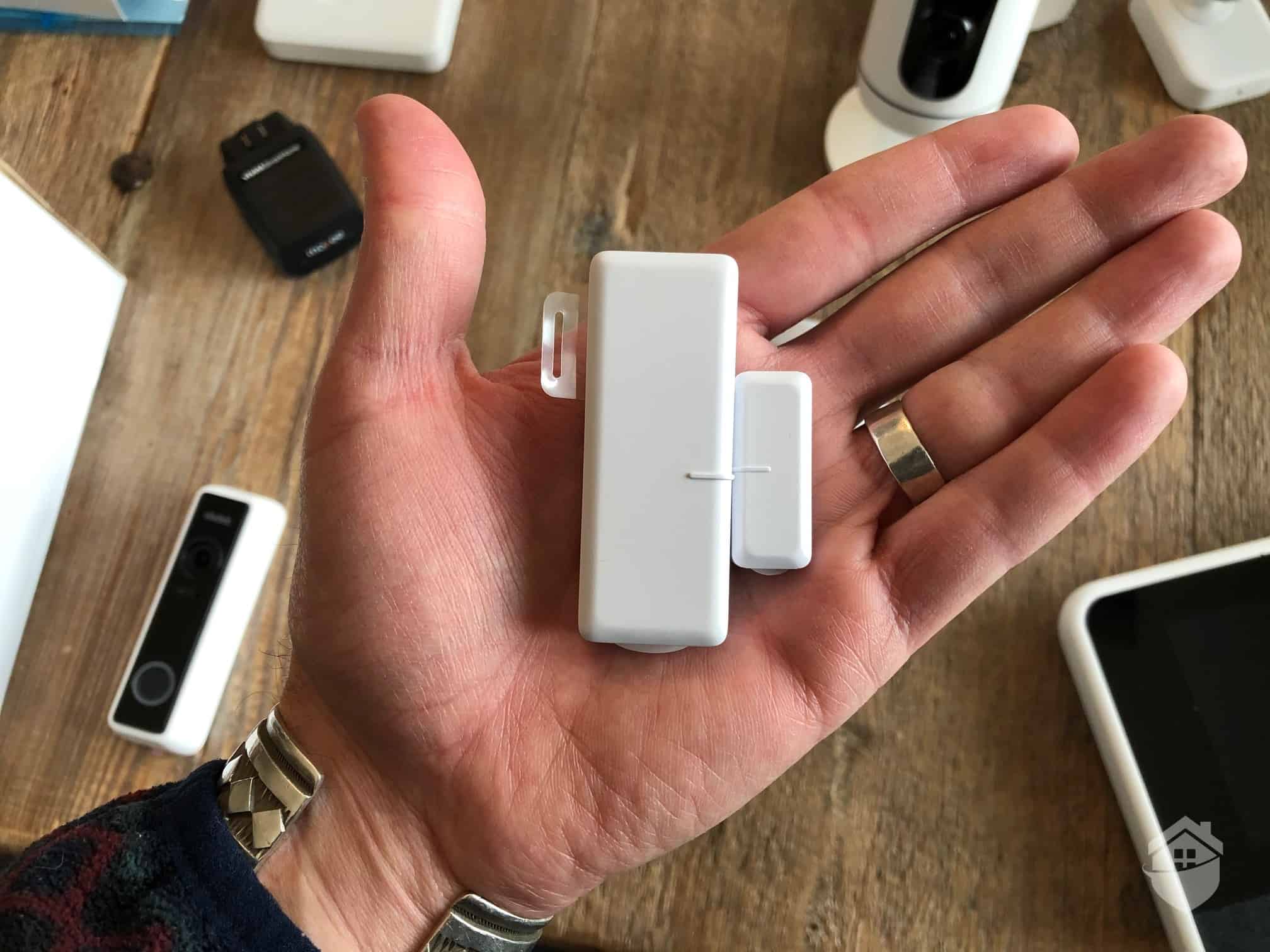
They might not be sleek, but Vivint’s door sensors are smaller than other door sensors we’ve held in our hands.
How It Works: These sensors use magnetic contacts that, when separated, send a signal to the Vivint Smart Hub, which then transmits a signal to the professional monitoring center. If a burglar picks your lock or somehow opens your window, the alarm will sound and your system engages in active emergency mode.
It’s worth mentioning that Vivint requires professional installation for all home security components, even something as simple as peel-and-stick door sensors. We think we can do it ourselves when all there is to do is peel the adhesive cover off and stick the sensors. We did it when we tested the DIY SimpliSafe security system.
We see the point, though. We recommend placing a door/window sensor on every first-floor door and window, which can get tiring. And besides, there are things to keep in mind when installing these sensors, like the maximum distance between the magnetic contacts. We also know that Vivint offers one of the best professional installation services. The service isn’t free, but Vivint sometimes waives the fee as a special deal.
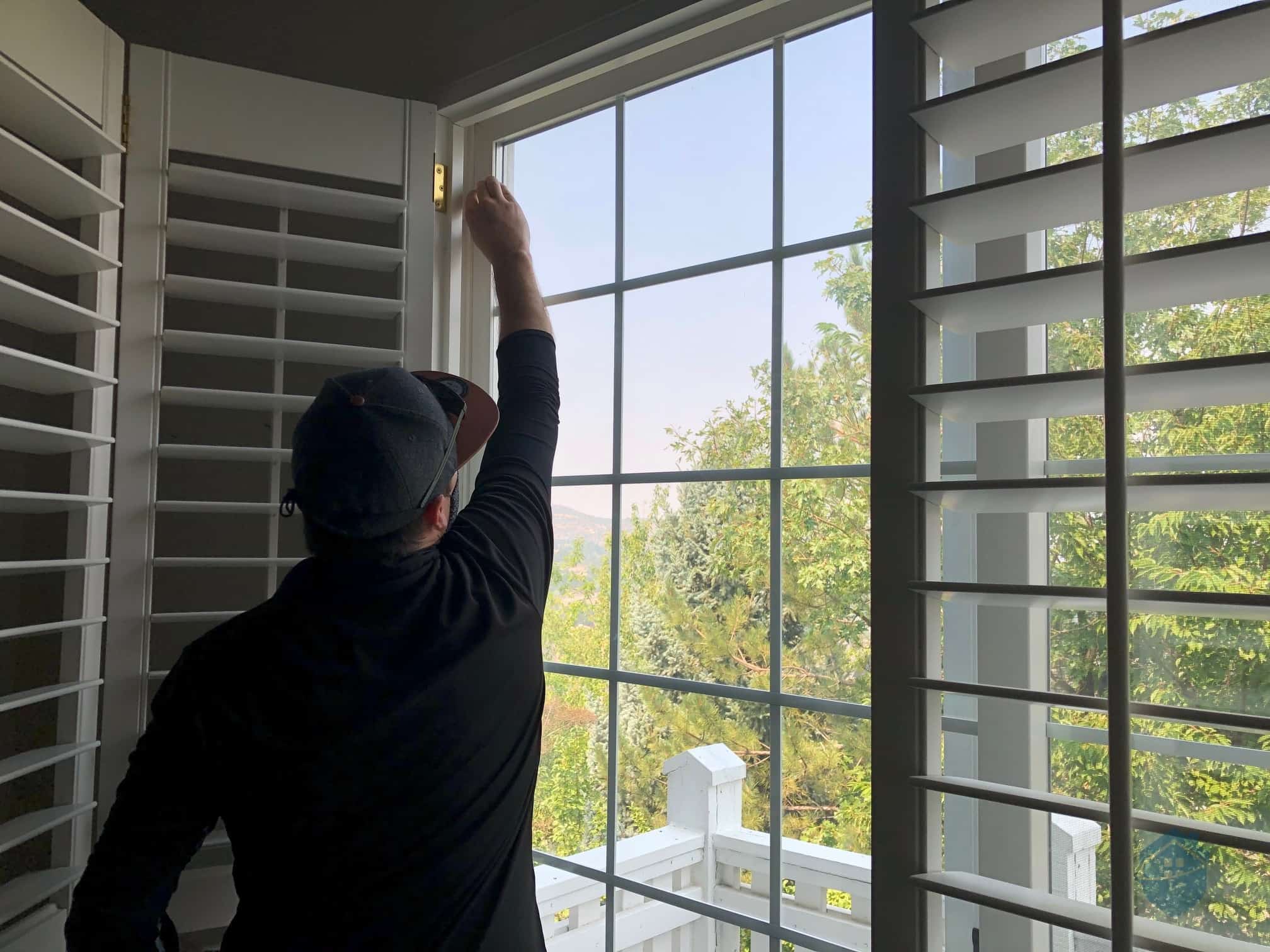
Here’s our Vivint technician installing one of our window sensors.
After installation, the sensors did what they were supposed to — they detected anytime our doors or windows were opened. If our Vivint system is armed when a door or window opens, it sounds the alarm. There’s nothing much to them either, but that’s everything you need to start protecting your home’s entry points.
As for pain points, there’s not much really. We’d have preferred it if the door sensor were a little prettier and less generic-looking. Next to the door sensor we got when we reviewed the Ring Alarm system, the Vivint door sensor just looks too plain. But when it comes to functionality, we prefer Vivint’s door sensors to that of Ring. Vivint sensors can trigger security cameras to record — something Ring sensors can’t do, despite Ring offering a healthy selection of security cameras. We guess you can’t have it all.
>> Compare: Vivint vs. Ring Alarm
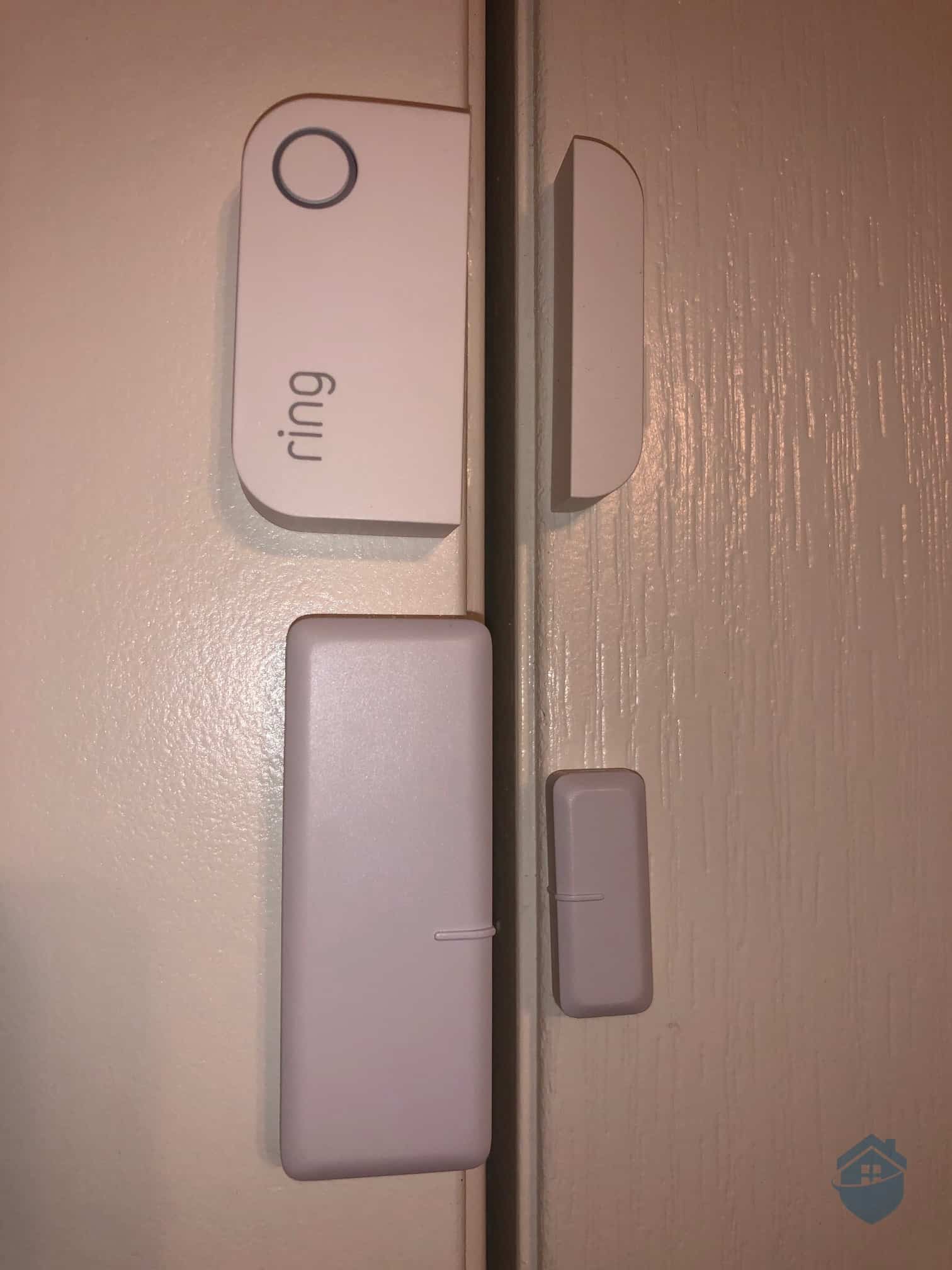
Comparing Vivint Door Sensor vs Ring Door Sensor
Vivint’s Recessed Sensors
Now for the recessed variety — it’s a great alternative if you care about how your door would look after installation. These sensors are invisible because you’d have to bore them inside your door frame — well, not you, but Vivint’s technician. Vivint officially calls its recessed door sensor the DW20 door sensor, and here’s how it looks prior to being installed.
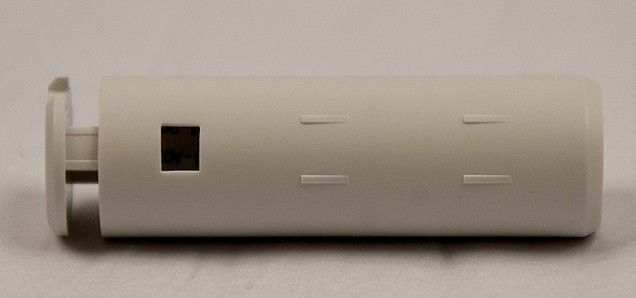
The technician will have to drill a hole into your door frame and door to insert both magnetic contacts.
The recessed door sensor works the same way as the peel-and-stick variety. When the magnetic pieces lose contact, they trigger an alarm if the system is armed. This type of door sensor was actually designed for homes with recessed doors, but, of course, it can work just as well if you want to hide your door sensors. It’s also great that you don’t have to worry about the sensor losing its adhesiveness over time and falling off — something we’ve dealt with before with peel-and-stick sensors.
There are a couple of downsides to the recessed door variety, though. One is the installation. You won’t have to do it yourself with Vivint, but it still requires them to drill holes into your door and door frame. If you’re renting your home, we imagine your landlord won’t be too happy with it, which is why we don’t recommend it to renters. Vivint in general isn’t too renter-friendly because of the length of Vivint’s contracts, but this is a component you should really avoid if you still go with Vivint.
The other downside is the battery. Vivint claims the batteries on their recessed sensors can last 10+ years, but in our experience, this typically depends on sensor location. For instance, we don’t imagine the battery on a front door sensor lasting 10 years — especially in a high-traffic household with lots of family members. And unlike the peel-and-stick sensor, replacing the batteries on a sensor that’s bored into your door frame can be a pain.

The DW20 sensor uses a CR20 battery, and you’d need to pull the whole unit off to replace it.
FYI: Unlike some other professionally installed systems, Vivint doesn’t require a technician to come to your house to replace batteries. That saves you on service costs. However, Vivint’s equipment warranty doesn’t cover battery replacements either, so you’d have to buy the correct batteries from yourself. We’ve had our Vivint system for over a year, and none of them have run out of batteries so far.
Vivint Motion Sensors
Vivint’s motion sensor is fairly straightforward. It uses Passive Infrared (invisible light) to detect movement, and when it does, it sounds the alarm.
It’s worth noting that, by default, Vivint only arms the motion sensor when you set the system to “Away” mode. This is fairly common, and something we’ve seen even from the simple Cove system we reviewed. The reason is that when you’re home at night — – which is typically when you should use the “Home” mode — you’d still want to be notified if your front door opens, but not when your teenager goes to the kitchen to drink a glass of milk at midnight. It’s simply to prevent false alarms, which is really important for professionally monitored security systems that can call the police, such as Vivint.
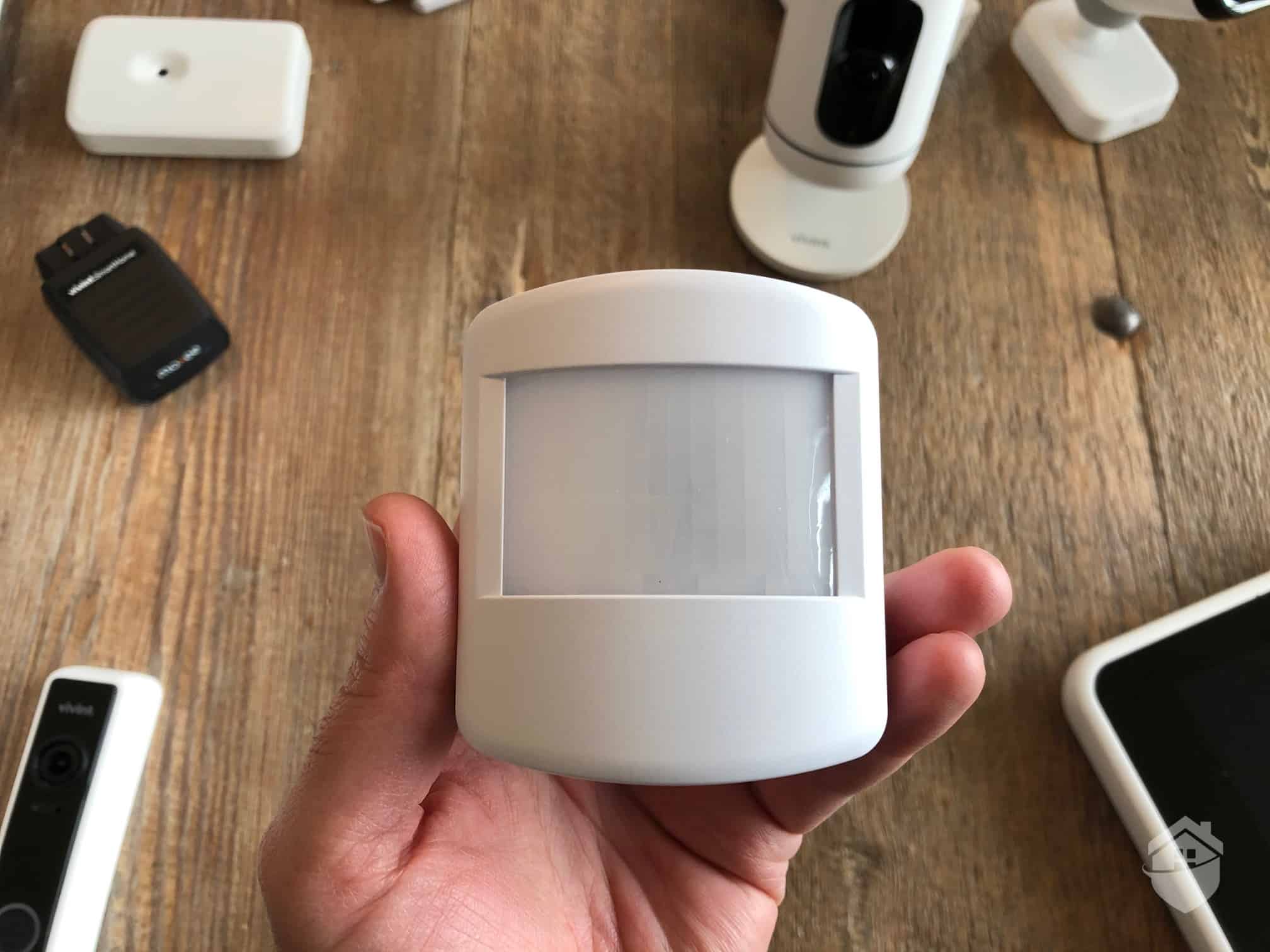
Vivint’s motion sensors are only a little bit larger than their door sensors.
Our Vivint tech, Don, gave us his thoughts on best placement, and we decided to mount it in the dining room that overlooks the living room. This gave us maximum detection range — which, by the way, is a 75° field of view (very standard), and it can sense moving objects up to 40 feet away. Also, expect about 2-5 years of battery life, which is typical for most motion sensors we’ve seen.
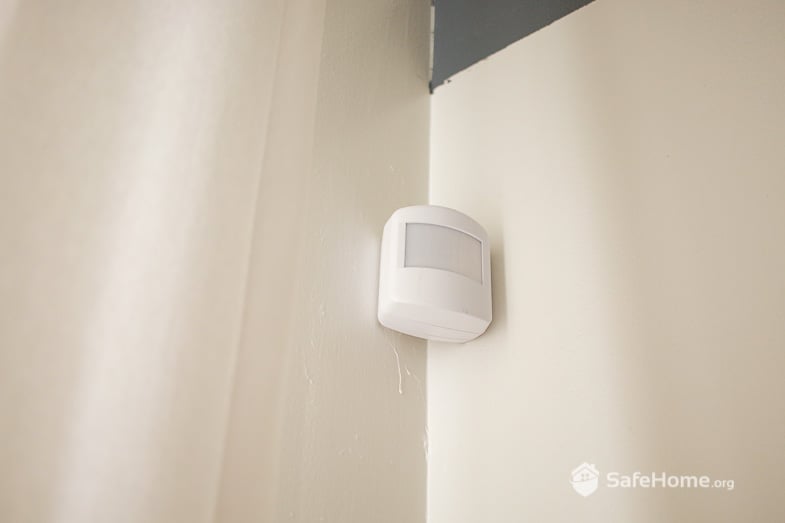
Vivint motion sensors are best placed high up in a corner for maximum coverage.
Now, something worth mentioning here is pet ownership. If you have a big bruiser of a dog, his lumbering presence might trip the motion sensor. The truth is, you’ll have to get rid of your beloved pet if you want to use Vivint motion sensors. Kidding! Of course.
Just pop the motion sensor off its bracket and flip the switches on the back of the device. You’ll see two switches — one labeled “Pet Immunity” and the other “Sensitivity.” If you have big dogs, turn on Pet Immunity and adjust the sensitivity to low for good measure. And that’s it! You’re back in business. For smaller pets, just turning on Pet Immunity should do. It helps to show your Vivint technician your pet prior to installation. They can set the sensor so you won’t have to do it yourself.
Pro Tip: Get creative with your sensor use. You can stick a door/window sensor on a liquor cabinet to keep the teenagers out, or put a motion detector near your water heater so it becomes a no-crawl zone for toddlers. Oh, and we’re huge fans of sensors on gun vaults. The point is, entry sensors and motion sensors offer wide-ranging versatility.
Vivint Glass Break Sensors
As you know, criminals can be downright unpredictable. They won’t always pick a lock or enter through an unlocked window. Sometimes they smash and grab — shattering a window and gaining entry that way. We’ve heard of instances where a broken window keeps the stick-on entry sensor intact (entry sensors stick to the window frame, not the glass itself!). That’s where a Glass Break Sensor comes in handy. Here’s what that looks like…
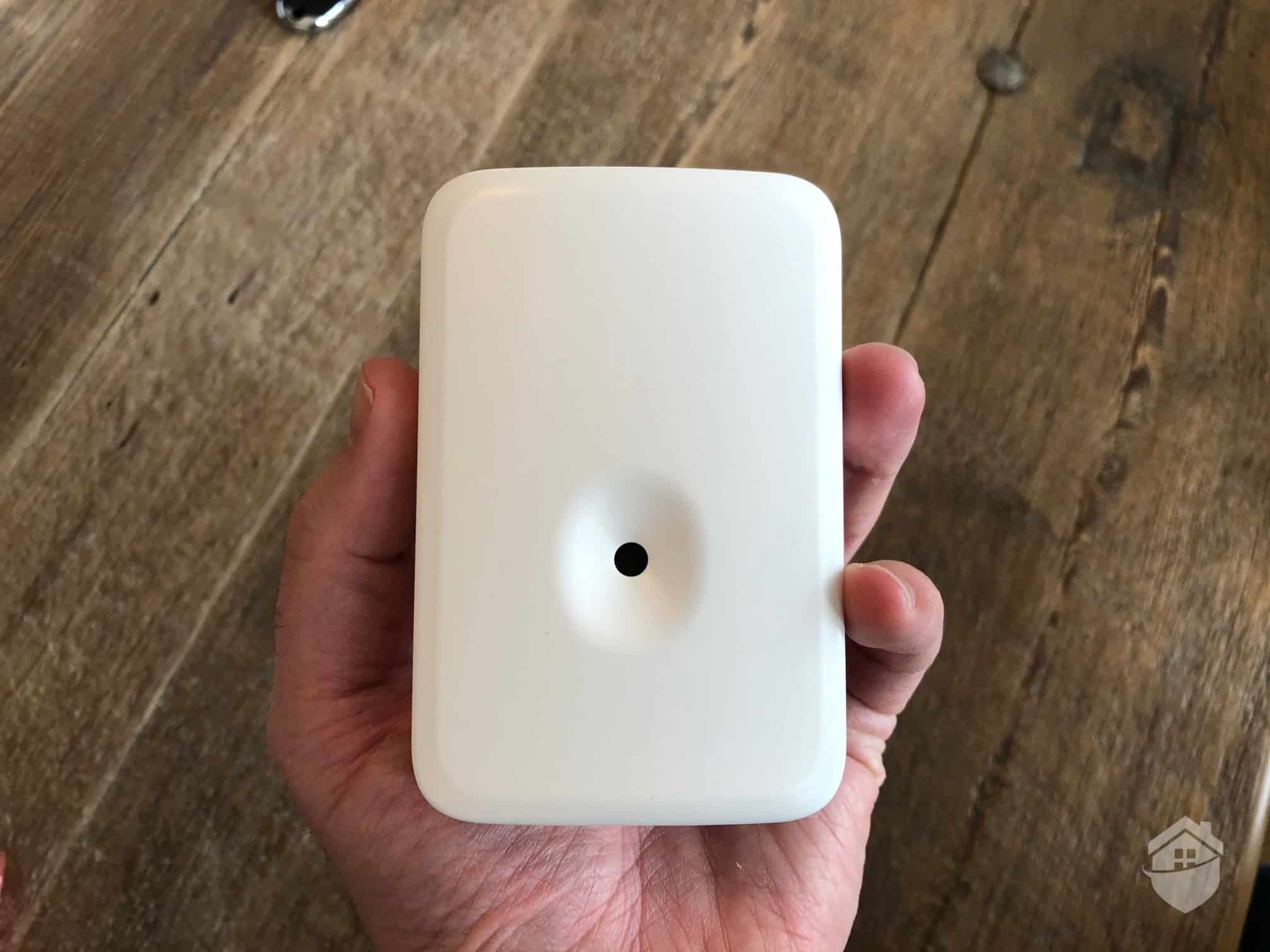
Vivint’s glass break sensor is more sleek-looking than other glass break sensors we tested, which are typically clunky and large.
This sensor has a built-in microphone that picks up high-frequency noises, like glass shattering. You don’t have to mount it on a window (in fact, you shouldn’t!). Instead, your Vivint tech will place it in a central location where you have lots of windows. See below for a pic we snapped of Don installing our glass break sensor between two bedrooms.
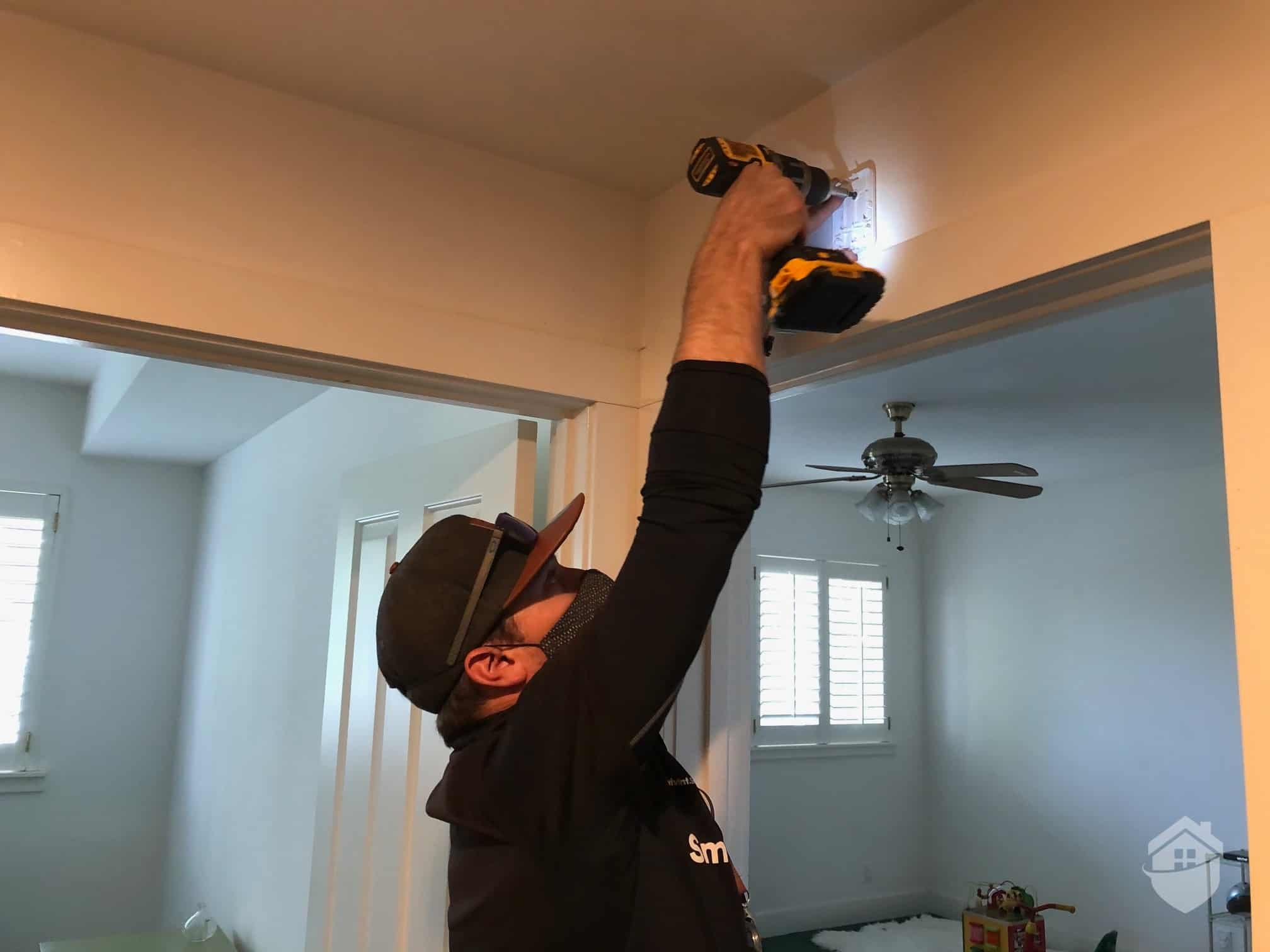
Don Installing the Vivint Glass Break Sensor
Pro Tip: Location matters with glass break sensors. In hindsight, our hallway might not have been the best location for the sensor, as now we’ll have to keep the bedroom doors open for the sensor to function correctly. No biggie, we can pop out the screw and relocate it ourselves.
You’ll want to keep in mind that glass break sensors are known to be finicky. Sure, they detect high-frequency noises like glass breaking. But do you know what else is high frequency? 1) A yappy little dog, 2) dishes breaking in the sink (oops!), and 3) even glass breaking on TV. So you might need to take a break from the Netflix docu-drama “Throwing Rocks in Glass Houses.” Overall, they do add an additional layer of security.
To be honest, glass break sensors may not be totally necessary in most homes because the sound of breaking glass gets a lot of attention in a residential neighborhood. But glass break sensors make a lot more sense for remote cabins, or businesses with large windows.
Note that you can get glass break sensors from most home security companies these days, but you probably won’t find them with some of the more affordable DIY brands.
Vivint Environmental Sensors
Vivint also sells environmental sensors that can keep an eye on things like fire, flooding, frozen pipes, and carbon monoxide. Don offered to install these for us, but we passed since they’re a bit pricey. We also have some Frontpoint environmental sensors that we’re pretty happy with.
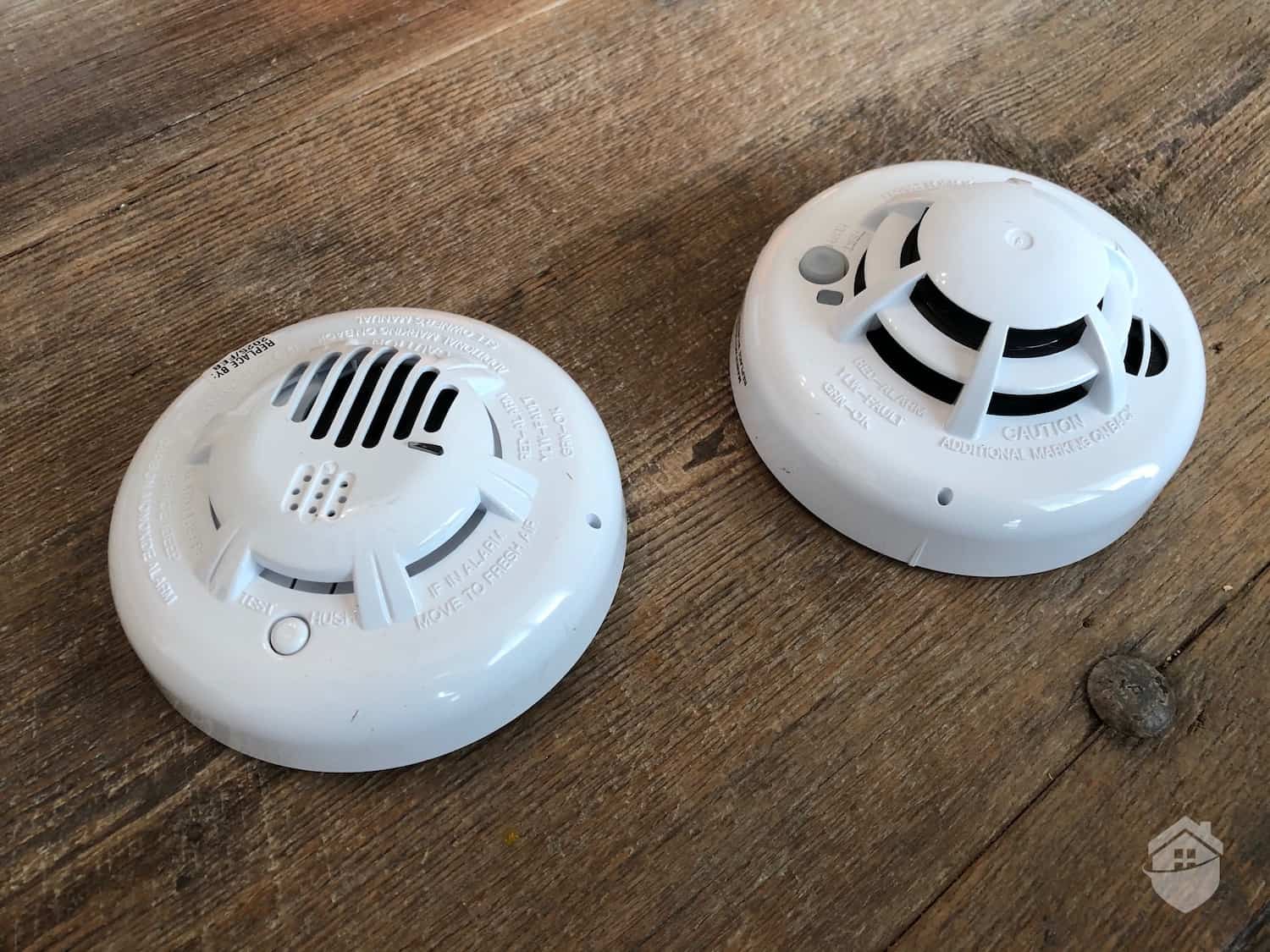
Vivint smoke and carbon monoxide detectors are linked to your Smart Hub — and thus, the monitoring center.
But if you’re going to have a Vivint smart home security system installed, we do recommend getting these environmental hazard sensors — and doubly so if you need to protect a vacation home or rental in a different city or state. This way, if a fire or other calamity strikes, you’ll get an instant alert in the Vivint app and (hopefully) have plenty of time to send first responders.
Expert Tip: Even if you have traditional smoke alarms, we recommend getting a few smoke sensors and gas leak detectors from your security system provider — Vivint or otherwise. Smoke alarms connected to your security system are not only linked to the monitoring center, but also to your home security app. That way, they can notify you if a fire breaks out or gas leaks — even if you’re not home.
Vivint Sensor Prices
Vivint really doesn’t offer a lot of sensor options, but they have all the sensors necessary to offer protection. That said, prices can vary. Vivint’s pricing isn’t really transparent. We’ve seen it offer special deals with free pieces of equipment or discounted prices. We also noticed that some prices change depending on location, likely because of taxes.
In any case, here’s Vivint’s pricing for the sensors we bought when we purchased our security system. Take note, this is just to give you a ballpark figure — the best way to know exactly how much Vivint equipment costs is to get a customized quote.
| Vivint Sensors | Sensor Type | Price |
|---|---|---|
| Door/Window Sensors | Entry | $35 |
| Recessed Sensors | Entry | $35 – $55 |
| Motion Sensors | Motion | $99 |
| Glass Break Sensor | Glass | $99 |
| Environmental Sensors | Smoke, Fire, Flood, Freeze, CO | $50 – $100 |
As you can see, the sensors can be quite pricey, even compared to security systems of the same caliber as Vivint. ADT’s pricing for its door sensors starts at $20. Cove’s packages can even include the same sensors for as low as $7.50 during sales, which happen fairly often.
You should also keep in mind that Vivint sensors — and the entire Vivint system, really — requires professional monitoring, with monitoring fees starting at around $29 per month. That’s just for a basic system with only sensors, though. If you add smart home devices (e.g. smart thermostats, smart lights, smart locks) and security cameras, you’ll have to upgrade your plan, which can cost about $49 per month. That’s expensive compared to SimpliSafe, which offers a comparable monitoring plan for $31.99 per month. However, to its credit, Vivint offers more smart home features.
>> Compare: Vivint vs. SimpliSafe
The Vivint Smart Hub
Before we wrap it up, we’d like to give the Vivint Smart Hub a special mention. It’s not a sensor, but it’s what connects all your Vivint sensors to the monitoring center. It’s also one of the best touch screen control panels we’ve tested, especially since a lot of security systems have moved away from offering this type of hub.
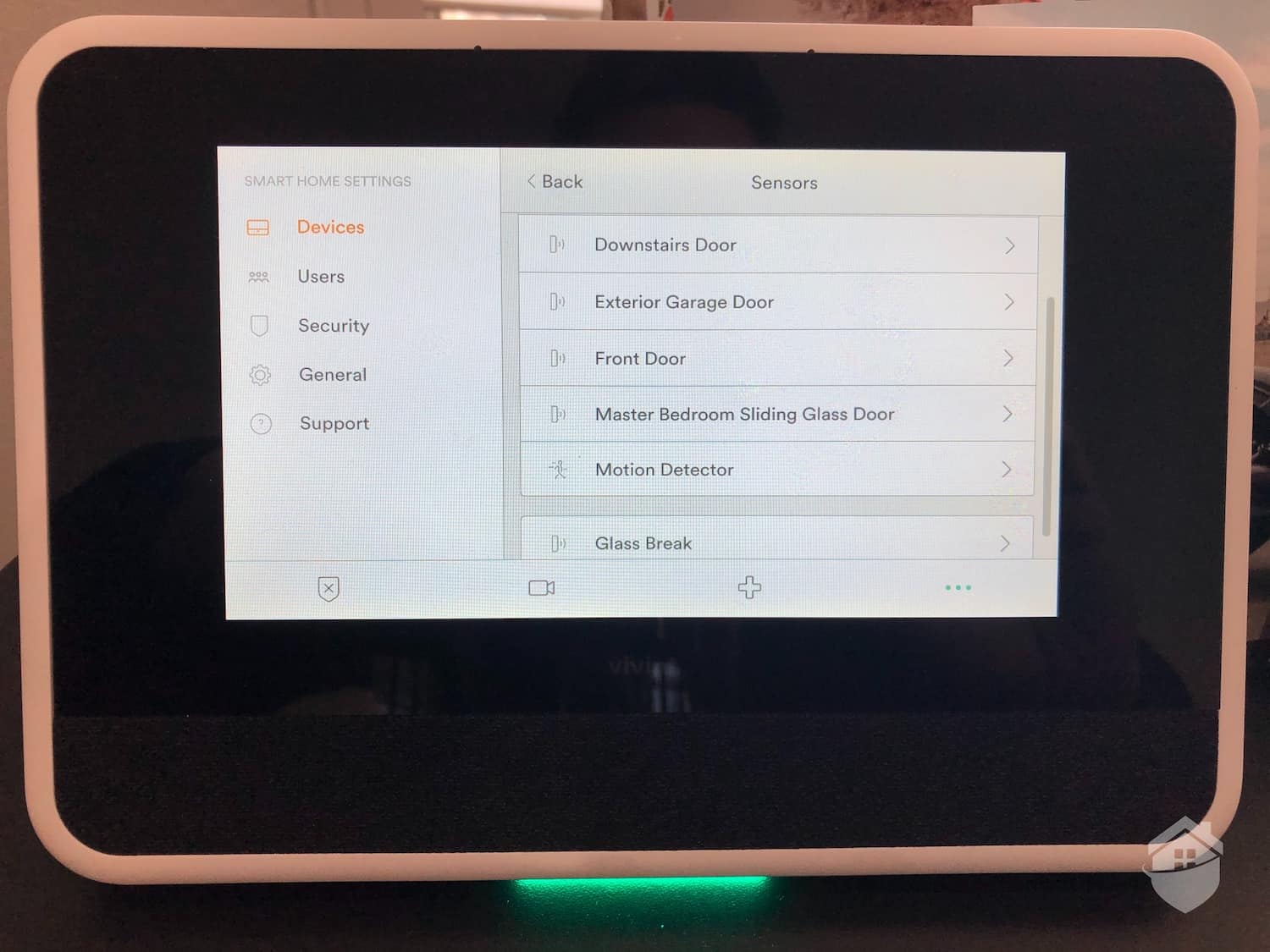
Our Vivint Smart Hub is our control center for the entire Vivint system.
The reason we say it’s one of the best touch screen panels is that it has special features we haven’t seen much from other similar hubs. For one, it can display security camera footage from our Vivint doorbell camera and security cameras. In fact, we often use it to answer our door — kind of like a digital peephole.
We also like that it opens a two-way audio link with the monitoring center during emergencies. It’s convenient, and could give burglars a good scare if they hear a voice coming from somewhere as soon as they enter your house.
We also like that the Smart Hub has backups, especially because it's responsible for sending alert signals. It has a 24-hour backup battery that kept our system running through an all-day power outage, as well as cellular backup that kept communication lines open when our router turned off during the outage.
Vivint sensors may not be something to write home about, but the hub that orchestrates them is.
Final Thoughts on Vivint Sensors
We think Vivint’s sensors are very well-made and can protect your home against would-be burglars, thieves, and even safety hazards like kitchen fires and carbon monoxide poisoning.
We really liked the professional installation offered by Vivint. This way, you don’t have to think about sensor placement and making sure everything works. They’ll set everything up for you and even give you helpful pointers and tips on how you can maximize your home security. We appreciate how our Vivint technician stayed a few extra minutes to explain how he chose placements for our motion and glass break sensors.
Overall, we’d say that Vivint offers great all-around protection through its sensors — especially if you supplement them with smart home devices and security cameras. Just be sure to bring your pocketbook to the party — you’ll need it.
Vivint Sensors FAQs
- How do Vivint door and window sensors work?
Vivint’s door and window sensors consist of two magnetic contacts. One is installed on the door or window frame, while the other is installed on the door or window itself. The two pieces should be in contact when the door or window is closed. When they lose contact, it means the door or window is opened, and that’s when they trigger an alarm.
- How do Vivint’s motion sensors work?
Vivint’s motion sensors use Passive Infrared to detect movement by sensing changes in infrared radiation emitted by objects within its view. This means the sensors are effective in cutting down false alarms because they only detect moving subjects that emit body heat, such as humans and animals. Vivint’s motion sensors also have two sensitivity settings that you can adjust to keep it from detecting pets, large or small.
- How do Vivint’s glass break sensors work?
Vivint’s glass break sensors are what’s called acoustic sensors. They listen for high-frequency sounds similar to the sound of breaking glass. Because of this, the sensor is best placed across the room from the glass door or window you want to monitor. Some security systems, however, offer vibration sensors that detect the vibration caused by breaking glass. This type of glass break sensor is best placed on the door or window you want monitored.
- How do Vivint smoke and carbon monoxide detectors work?
Vivint smoke and carbon monoxide detectors work the same way as traditional smoke/CO alarms, but instead of simply sounding an alarm when fire breaks out or gas leaks, they also notify Vivint’s monitoring center and your phone (via the Vivint app). This means they can notify you even if you’re not home.
- Does Vivint offer garage door tilt sensors?
At last check, Vivint no longer offers a garage door tilt sensor, but it does offer a smart garage door controller. This lets you control your garage door remotely using the Vivint app, and, in addition, it can notify you if your garage door is left open.




